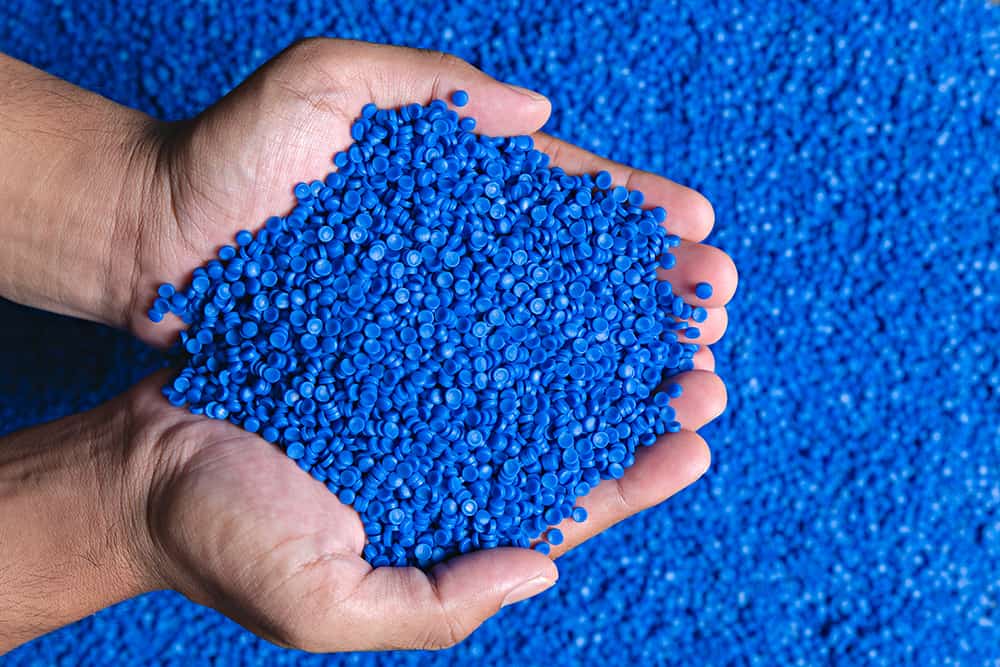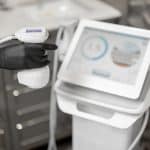
The global medical polymer market is a highly dynamic sector, expected to experience substantial growth from 2024 to 2030. This article details the key factors influencing this market’s expansion, including technological advancements, regulatory frameworks, regional disparities, and the impact of the global health crisis.
Key Takeaways
| MARKET GROWTH (2024-2030)
The global medical polymer market is projected to grow significantly, from USD 20.44 billion in 2022 to USD 38.3 billion by 2030, with a CAGR of around 8%. |
INFLUENCING FACTORS
Adoption of Polymers in Medical Implants: Due to their chemical inertness and superior fatigue resistance. Demand for In-House and Advanced Medical Devices: Increasing need for advanced healthcare solutions.
|
| MARKET SEGMENTATION
By Product: Fibers & resins, medical elastomers, biodegradable polymers. By Application: Medical device packaging, medical components, wound care. |
REGIONAL ANALYSIS
North America leads in production and consumption. Europe follows closely, driven by political support and favorable regulations. Asia-Pacific expected to see the fastest growth. |
|
MARKET DYNAMICS
Drivers: · Growing pharmaceutical devices market. · Rising demand among aging populations and for medical procedures. · Increasing use of polyethylene-based surgical instruments. Restraints: · Stringent government regulations. · Fluctuations in raw material prices.
Opportunities: · Advancements in biodegradable polymers for medical applications. · Technological innovations in medical device packaging and diagnostics.
|
|
| KEY PLAYERS
Notable companies like BASF SE, Bayer, Celanese, DSM, DuPont |
CHALLENGES AND OPPORTUNITIES:
While facing regulatory and material cost challenges, the market has opportunities in biodegradable materials and technological advancements. |
1. Market Overview
The global medical polymer market was valued at approximately USD 20.44 billion in 2022 and is projected to reach a staggering USD 38.3 billion by 2030, growing at a Compound Annual Growth Rate (CAGR) of around 8%. This significant growth can be attributed to several factors, including the high adoption of polymers in medical implants due to their chemical inertness and superior fatigue resistance, and the rise in the demand for in-house and advanced medical devices.
2. Market Dynamics
2.1 Market Drivers
2.1.1 Increasing Pharmaceutical Devices Market
The expanding pharmaceutical device sector is a major driver for the growth of the medical polymer market. With the continuous advancements in medical technology and the increasing demand for advanced healthcare solutions, the need for medical polymers has witnessed a significant surge.
2.1.2 Aging Populations and Medical Procedures
The aging population is another prominent factor propelling the demand for medical polymers. As the elderly population increases, the requirement for medical procedures, particularly those involving the use of implants and surgical instruments, also rises. This trend is expected to continue, further fueling the market growth.
2.1.3 Increasing Demand for Polyethylene-Based Surgical Instruments
The rising demand for polyethylene-based surgical instruments has significantly contributed to the growth of the medical polymer market. Polyethylene, due to its durability, flexibility, and compatibility with human tissues and fluids, is an ideal choice for various medical applications.
2.2 Market Restraints
2.2.1 Stringent Government Regulations
Stringent government regulations governing new products and their usage in the medical field pose a significant challenge to market expansion. Approval processes for new products can be lengthy and rigorous, potentially hindering the market growth.
2.2.2 Fluctuating Raw Material Prices
The production of medical polymers is heavily reliant on raw materials like ethylene, propylene, caprolactam, corn starch, and silica stone. Fluctuating prices of these raw materials can affect the production cost, thereby impacting the overall market.
 2.3 Market Opportunities
2.3 Market Opportunities
2.3.1 Biodegradable Polymers in Medical Applications
The increasing use of biodegradable materials in the creation of medical implants presents a lucrative opportunity for the medical polymer market. This is due to the escalating environmental concerns and stringent government regulations for polymers used in the medical sector. As these materials are both cost-effective and efficient alternatives to conventional materials, they are expected to witness increased adoption in the near future.
2.3.2 Technological Innovations and Advancements
Technological innovations like device miniaturization, multipurpose medicine packaging, and point-of-care (POC) diagnostic equipment have significantly contributed to the rapid expansion of the global medical polymers market. As companies collaborate to develop novel solutions to meet the growing market demands, the use of polymer in medical applications is expected to rise, thereby boosting the market’s growth rate.
3. Market Segmentation
The medical polymer market can be segmented based on the type of product and its applications.
3.1 By Product
3.1.1 Fibers & Resins
Fibers and resins, such as Polyvinyl Chloride (PVC) and Polypropylene (PP), account for the largest market share due to their diverse applications in medical devices and equipment. They are highly sought after due to their high melting point, good resistance to dilute acids, alcohol, alkalis, high density, low-cost, good processability, good electrochemical insulation, good impact strength, very low water absorption, and FDA compliance.
3.1.2 Medical Elastomers
Medical elastomers like Styrene Block Copolymer and Rubber latex are also witnessing significant demand in the healthcare sector. Their lightweight, high bacterial, and chemical resistance properties make them ideal for various medical applications.
3.1.3 Biodegradable Polymers
Biodegradable polymers like Polylactic Acid (PLA) and Polyhydroxyalkanoate (PHA) are anticipated to witness the fastest growth during the forecast period. This is primarily attributed to the increasing awareness regarding environment-friendly products and efforts to replace conventional plastics.
3.2 By Application
3.2.1 Medical Device Packaging
Medical polymers find extensive use in medical device packaging. The creation of innovative biomaterials that can enhance the performance and biocompatibility of medical devices is driving the demand in this sector. In addition, biodegradable polymers in packaging are designed to break down after use, thereby preventing plastic pollution.
3.2.2 Medical Components
Medical components constitute another significant area of application for medical polymers. The lightweight and high bacterial resistance properties offered by the polymers make them an ideal choice for this sector.
3.2.3 Wound Care
The wound care sector is also expected to witness considerable growth in the demand for medical polymers. This is attributed to the growing geriatric population, increasing prevalence of diabetes, and surging incidence of chronic wounds.
 4. Regional Analysis
4. Regional Analysis
The global medical polymer market is divided into several regions, including North America, Europe, Asia Pacific, and the Rest of the World.
4.1 North America
North America is the largest market for medical polymers, both in terms of production and consumption. The region’s market growth can be attributed to the strong awareness of personal healthcare, which has pushed healthcare expenditure per person. The presence of key players, considerable R&D investments, and high demand in end-user sectors such as medical devices and equipment are expected to sustain the North American medical polymer market.
4.2 Europe
Europe follows North America closely in terms of market share. The region’s growth is driven by the growing political support and favorable reimbursement regulations for medical devices. Additionally, updates to the region’s medical device directives are expected to improve the effectiveness, innovation potential, and safety of medical products, thereby driving the demand for better medical devices.
4.3 Asia-Pacific
The Asia-Pacific region is expected to witness the fastest growth in the medical polymers market. This is attributed to the rising healthcare infrastructure and medical expenses in developing countries such as India, Japan, China, and South Korea. The expanding healthcare systems in the region, along with increased awareness of medical procedures, are driving the market growth.
5. Key Players in The Market
The global medical polymer market is consolidated with the presence of major players, including BASF SE, Bayer, Celanese, DSM, DuPont, Solvay, Eastman Chemical, Evonik, HEXPOL, Exxon Mobil, Formosa Plastics, INEOS, Petrochina, Eastman Chemical Company, Mitsui Chemicals, Inc., and Celanese Corporation. These players have been involved in partnerships, expansions, and product innovations to stay ahead of their competitors.
Conclusion
As we anticipate the dynamic period up to 2030, it’s clear that the global medical polymer market is set for transformative growth, propelled by technological advancements, increased healthcare investments, and varied application needs. While navigating challenges like stringent government regulations and the volatility of raw material prices, the burgeoning opportunities in biodegradable polymers and innovative technologies cannot be overlooked. This shifting market landscape emphasizes the need for precision, innovation, and compliance in both material production and application.
At AIP, we find ourselves at the forefront of this evolving market. Our four decades of experience in precision machining and our specialized knowledge in high-performance plastics and composites uniquely position us to meet the burgeoning demands of the medical polymer industry. We excel in working with materials like PEEK, Polysulfone, ULTEM, and Torlon, delivering components that exhibit unmatched chemical, thermal, and structural resistance – vital characteristics for medical polymer applications.
Our contributions extend beyond the medical field into sectors such as semiconductor manufacturing, heavy industry, chemical processing, and the power and energy sectors. Our expertise in advanced 5-axis and 7-axis plastics machining, CNC milling, and turning ensures that we produce components with the highest precision and quality. Our commitment to excellence is further evidenced by our adherence to AS 9100, ISO 13485, and ISO 9001 certifications.
As the medical polymer market evolves, the demand for customized solutions and rapid prototyping grows.
Our rapid prototyping services, which are capable of delivering complex prototypes in less than 10 business days, and our collaborative approach to client relationships ensure that each project we undertake is not just a transaction but a partnership toward groundbreaking innovations.
If you’re looking for a partner who understands the nuances of the medical polymer market and can deliver high-quality, compliant, and precision-engineered solutions, AIP is your ideal choice. I invite you to engage with us and explore how our expertise in high-performance plastics and composites can enhance your projects and help you successfully navigate the thriving medical polymer market.
Contact AIP today, and let’s shape the future of medical polymers together.
Research:
- https://www.grandviewresearch.com/press-release/global-medical-polymer-market
- https://www.linkedin.com/pulse/global-medical-polymers-market-2024-2030/
- https://www.linkedin.com/pulse/global-medical-polymers-market-size-share-trends/
- https://www.researchandmarkets.com/reports/4538786/medical-polymer-market-size-share-and-trends
- https://www.acumenresearchandconsulting.com/medical-polyethylene-market
- https://www.precedenceresearch.com/press-release/medical-polymer-market
- https://www.marketresearch.com/Grand-View-Research-v4060/Medical-Polymer-Size-Share-Trends-34336915/
- https://www.coherentmarketinsights.com/market-insight/medical-polymer-market-4163






